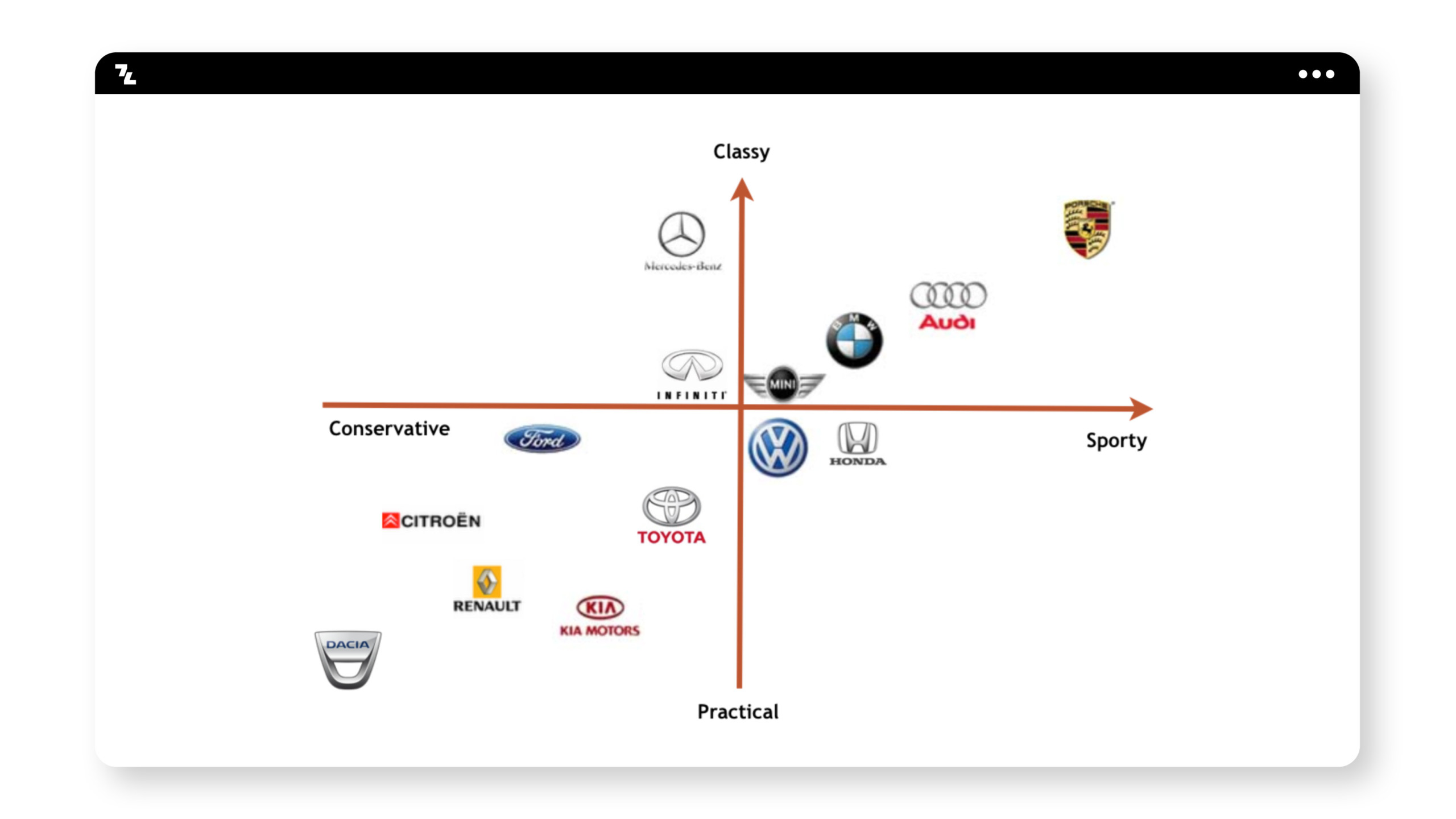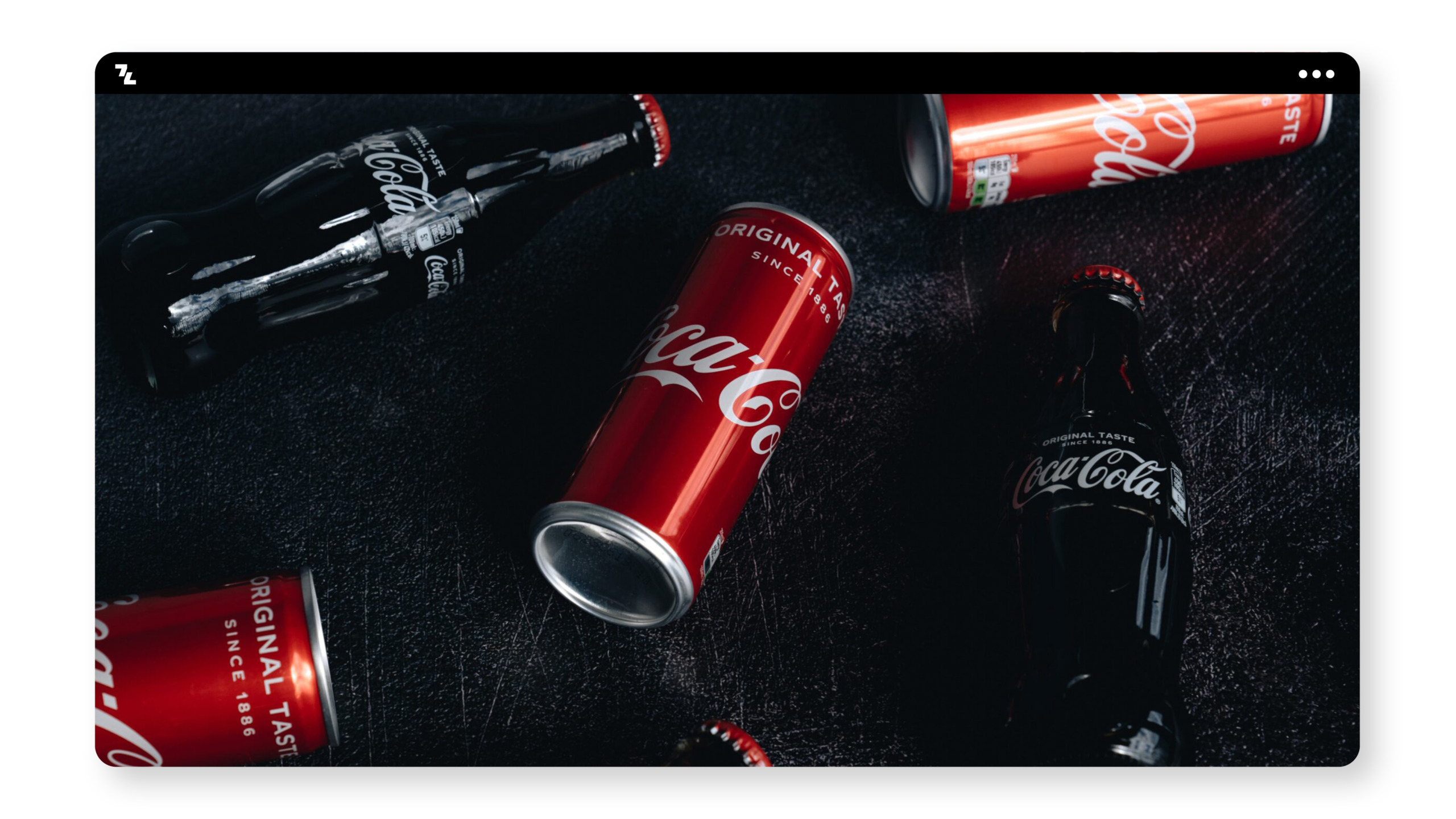Let’s think about this for a moment: There are thousands of companies out there, many of which offer the same products, promise similar results, and are generally positioned the same in the marketplace.
So why would a customer choose one company over another? Why does he take the first option and not the second if both lead to the same type of business selling the same thing?
The answer is simple: no one wants to buy a product or service because it can do everything, but because it can do something. And that is what positioning implies in marketing. A clear positioning statement is at the core of any marketing strategy, defining the look, words and phrases of your brand system.
Positioning requires focus and a commitment to a specific niche, idea or target audience. Your brand and marketing strategy won’t work if you try to be all things to all people.
This blog post will dig up some facts and let you know what positioning is in marketing and how to create an effective positioning strategy.
Definition
Positioning determines where your product (item or service) stands in the marketplace and in the minds of consumers compared to others offering similar products and services.
Good positioning makes a product unique and leads users to see it as a distinct benefit to them. Good positioning gives the product a USP (unique selling proposition). In a market with many products and brands offering similar benefits, good positioning sets a brand or product apart from the others, gives it the ability to command a higher price and fend off competition from the others.
Good positioning in the market also enables a product and its company to weather bad times more easily. A good position is also one that allows the brand or product flexibility in extensions, changes, distribution and promotion.

Instruction
Here is a brief overview of the most important steps for successful positioning.
Create a positioning statement that serves to identify your company and how you want consumers to perceive the brand.
For example, Volvo’s positioning statement, “For upscale American families, Volvo is the family car that offers maximum safety.”
Set goals
What do you want to achieve as a company? Your positioning is a fundamental pillar of business strategy, and it affects how you drive growth and attract the talent you need to expand. If you don’t already have your business goals in writing, sit down with your management team and make sure everyone has a clear list of priorities. This way, you have a clear goal in mind when you start formulating your positioning statement.
Market analysis
According to a study of professional services marketing, companies that know their target audiences and their competition intimately are more than twice as likely to be high-growth companies (those that grow at least 20% annually). This type of research is often referred to as brand research and is usually conducted by an independent company to ensure confidentiality and obtain more honest feedback from participants. It usually includes interviews with current customers, prospects and referral sources. It also includes an analysis of your competitors – what they say about themselves and how your audience perceives them.
Brand research can also identify strengths and weaknesses that you couldn’t see before. You will also learn what factors potential customers value most during the selection process.
And brand research is critical to the success of the next step.
Define USPs
This is where your business goals and brand research turn into marketing gold. Based on your team’s insights, external perceptions of your firm, and a new understanding of your competitors’ positioning, you will pick out characteristics that both set you apart from your competition and are valuable to potential clients at the time they select a firm.Strong differentiators must also meet three other criteria: They must 1) true, 2) provable and 3) Be relevant to your target audience. If a differentiator is not true, customers will often sense this and treat your company with skepticism. Therefore, you should be able to support each differentiator with evidence. You will often find evidence in your brand research (e.g., the statement “9 out of 10 customers recommend us” is a nice statistic to back up a variety of differentiators).Some differentiators may be characteristics you discover in your research (“clients find we are very flexible”), while others may be a specialization you have already cultivated (“we provide network security services exclusively to accounting firms”). If you find that your existing differentiators are not enough, you may decide to add a new focus or concentrate on a specific area where you are strong. While initially ambitious, this approach can work as long as you really commit your company to it and can demonstrate that you will continue to do so in the future. If you’re having trouble thinking of possible differentiators, check out this list of 21 professional services differentiators for ideas.To learn more about uncovering your differentiators, check out our free guide to differentiation for professional services firms. Also, I recommend you read this blog post on competitive differentiation.Write positioning statement
Now it’s time to translate your differentiators into a story that clearly communicates your competitive advantage. A positioning statement distills your key selling points into a short paragraph. It is an internal document – because it is compact, it is not meant to be used verbatim on your website or in your marketing materials. Instead, think of it as a resource you can return to again and again when you need inspiration to describe your business or convince people to buy from you.
A brand positioning statement can take two different forms: an elaborate paragraph or a prompting statement. Developing an elaborate paragraph takes more skill and time, but some companies find it translates more easily into marketing messages. A Prompted Statement is faster and easier to write – your team fills in the blanks with the appropriate information.
Positioning strategies
Positioning strategies can take many forms, but not all are appropriate for professional services firms. Below are five strategies that are most important for positioning a company like yours:Cost-driven positioning
“We offer everything the other companies offer, but we cost less.” This is a very challenging strategy unless you have an inherent cost advantage. Technology can be your best friend if you use it more effectively than your competitors, or your worst enemy if you lag behind others in a cost-driven strategy.
Niche service specialization
In this strategy, you focus on offering a service that is not widely available among competitors. They offer specialized expertise that a generalist probably would not have. This approach can work well unless the service begins to generate strong demand and new competitors emerge that dilute your “specialty.”
Industry specialization
This is a popular and often effective way to position a professional services firm. It’s another form of specialized expertise, and it allows you to narrowly focus your marketing and evolve your services as your market changes. Industry specialization implies that your company has extensive experience in working with similar companies. However, this approach also entails risks. If your industry experiences an economic downturn, your fate may follow. It’s also easy for new competitors to enter the scene and disrupt your positioning.
Role focused specialization
“We help CEOs succeed” is an example of role-focused positioning – targeting a specific function in the company. Instead of specializing in a particular industry or service, target a group of people. These buyers will perceive you as more attuned to their needs and expect you to offer specific knowledge or expertise that will make their jobs easier.
Positioning the quality of the service
This is one of the most common strategies used by professional services firms, and (with few exceptions) one of the least effective. “No one is more committed to quality,” “we deliver the best service,” and similar messages are so ubiquitous in the marketplace that they don’t impress buyers at all. Of course, buyers want quality and customer service – but these qualities are a given and rarely a criterion for selecting a company.
Advantages of positioning
There are a number of reasons why you should consider making positioning a part of your marketing strategy. With the right positioning tactics, you can create better marketing messages, better design your services and structure pricing plans to stay competitive.
Here are 5 advantages of positioning in marketing:
Create a strong competitive position
The right positioning influences how customers perceive your product or service compared to the competition. If you create a positive image of your product/service in the minds of customers, you are likely to enjoy a lasting market advantage. This way, you can maintain your position in the competitive landscape, which will greatly help you stay ahead of the competition.Improve sales
One of the main goals of any business is to improve sales and revenue. By having a more relevant offering and communicating it more effectively, your company may be able to penetrate a new market, which can translate into new customers and additional sales.
Define a clearer target market
Positioning in marketing allows you to claim a specific feature or benefit and focus your products/services accordingly so that you appear to be the expert in the services. This significantly increases your value to potential customers.
Positioning in marketing helps to define a clearer target market
Make more effective decisions
Once you have the core message that ensures a successful positioning strategy, you will be able to make more effective decisions throughout the process. Clear marketing positioning also ensures effective communication, resulting in healthier and stronger relationships with customers.
Connection to consumer needs
Through positioning in marketing, companies have the opportunity to communicate the key benefits that their product/service offers. It not only helps power the product, but also connects it to the specific customer who needs it.Examples
The following are examples of the positioning of successful and internationally known brands. However, this was not developed and built up overnight, but over decades.
Tesla
Tesla is leaving price out of its branding and focusing instead on the quality of its vehicles. Therefore, Tesla is a luxury brand that is more expensive than its competitors. In addition, Tesla cars have a long range, are environmentally friendly and electric.
Tesla distinguishes itself from other gas-powered luxury and standard electric vehicles by its high quality. The company has created a market niche and a fun brand to match. CEO Elon Musk has even built himself up as a Tony Stark-like figure, and the company promotes its uniqueness through advertising and quirky features like “Ludicrous Mode.”

Volvo
Let’s take another example: Volvo cars. What position does this car manufacturer have in your eyes? Is it a position of safety? Exactly. Remember those car accident commercials? Their position is that of safety; the Volvo brand evokes the idea of safety – they have positioned themselves as the safest within the concept of automobiles. That’s effective PR.
Starbucks
Coffee consumption in the U.S. has been on a downward trend since the 1960s. As a result, Starbucks was extremely cautious in selecting its target market. Starbucks targeted middle- to high-income office workers who wanted to buy premium products.
The company wanted to make itself a “third place” – the place between home and work where customers could meet, relax and interact with each other. Therefore, they were very concerned about their quality control to meet the high expectations.
In most of their advertising campaigns, they often emphasize their identity by showing the following value proposition statements:
- The best coffee
- The finest milk used
- Rich & smooth flavors
- Natural & clean
- Use of 100% recycled paper

Coca coal (repositioning)
The following example describes Coca-Cola’s repositioning of Mother Energy Drinks:
The Coca-Cola Company introduced Mother Energy Drinks to the Australian market in 2006. The launch campaign was professionally executed and Coca-Cola was able to leverage its distribution channels to get the product into major retailers.
However, the taste of the Mother Energy drink was inferior and repeat purchases were very low. Coca-Cola was faced with a decision: improve and reposition the product or withdraw it and introduce a new brand and product.
The company ultimately decided to reposition the product because of its already high brand recognition. The biggest challenge for Coca-Cola was convincing consumers to try the product again. The company changed the packaging, increased the size of the can and improved the taste of the product. The relaunch of the product was accompanied by a new slogan – “New Mother, tastes nothing like the old one.”
Ultimately, Coca-Cola successfully repositioned Mother Energy Drinks, and the brand now competes with the two leading energy drinks on the market – V and Red Bull.

Summary
Most professional services firms are poorly positioned in the marketplace. They believe they can attract more customers by opening their arms wide to everyone – the greater their reach, the more business will flow into their embrace. But that’s not what’s really happening. When buyers look around and see arms awkwardly extended everywhere, they have nowhere to turn.
That’s why it’s so important to have a brand positioning strategy. It gives your potential customers something to be interested in – and will ultimately convince them to buy from you. Your target audience will find you many times more intriguing than a generalist firm because you have the specialized expertise they need. And as a specialist, you can often charge more.
If your company is unable to consistently attract premium customers, take heart. You are not alone. Every law firm can sharpen its positioning and gain an enviable competitive edge. All it takes is a little courage to take the first step.





